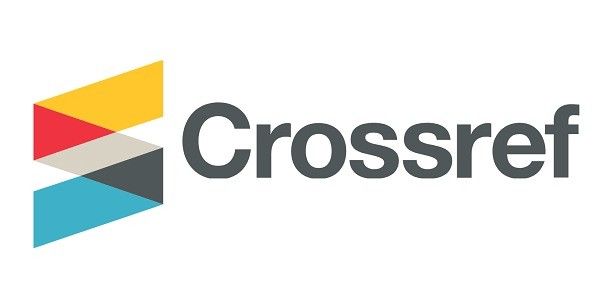Abstract
Contemporarily, a flood of digital interior architectural imagery has emerged of spaces developed for the Metaverse, a forthcoming immersive 3D virtual world. These spaces are not bound by the conventions of architectural practice nor the demands of the physical world, providing an opportunity for design exploration and innovation in the future of interiors and positing challenges to core architectural concepts that have accompanied traditional practice. This research offers a visual analysis of aesthetic trends and new typologies present in the interior architectural spaces designed for the Metaverse. The analysis features a curated and collaged collection of works from ten creators of Metaverse spaces, categorised to examine the impact of digital architectural spaces that increasingly detach from the needs of physical dwellings. The research reveals commanding visual trends in Metaverse interior imagery that challenge traditional notions of interiority and dwelling and finds aesthetic signifiers of belonging in spaces that Augé (1995/2009) would neatly classified as an empirical 'non-place.' Positioned as a form of heterotopia in a realm where architecture is being designed for the purely visual, we posit that the less recognisable these spaces become, the more potential they hold for innovation in both the Metaverse and in dialogue with real-world interior architecture.
Publication Date
7-30-2024
References
Abhari, M., Abhari, K., Drinkwine, M., & Sloan, J. (2021). Extended reality (XR) applications in architectural practice: Towards a development framework. In C. Stephanidis, M. Kurosu, J. Y. C. Chen, G. Fragomeni, N. Streitz, S. Konomi, H. Degen, & S. Ntoa (Eds.), HCI international 2021-late breaking papers: Multimodality, extended reality, and artificial intelligence (HCII 2021) (pp. 185–196). Springer International Publishing. https://doi.org/10.1007/978-3-030-90963-5_15
Al-Tabeeb, A. K., & Al-Desouqi, A. A. (2023). Metaverse in architecture: An approach to documenting and exploring the Egyptian heritage through Metaverse. Green Building & Construction Economics, 4(2), 276–295. https://doi.org/10.37256/gbce.4220232300
Atmodiwirjo, P., & Yatmo, Y. A. (2020). Reading between the lines: Revealing interiority. Interiority, 3(1), 1–4. https://doi.org/10.7454/in.v3i1.77
Auge, M. (2009). Non-places: An introduction to supermodernity (J. Howe, Trans., 2nd ed., pp. VII-XXII). Verso Books.(Original work published 1995)
Bjerregaard, P. (Ed.). (2019). Introduction: Exhibitions as research. In Exhibitions as research: Experimental methods in museums (pp. 1–16). Routledge.
Bouman, O. (2005). Architecture, liquid, gas. Architectural Design, 75(1),14–22. https://doi.org/10.1002/ad.8
Constant, C. (1990). The Barcelona Pavilion as landscape garden: Modernity and the picturesque. AA Files,20,46–54. https://www.jstor.org/stable/29543706
Crookall, D., Oxford, R., & Saunders, D. (1987). Towards a reconceptualization of simulation: From representation to reality. Simulation/Games for Learning, 17(4), 147–171.
Danti, A. (2024). Image of a periscope [Photograph]. Shutterstock. https://www.shutterstock.com/g/andreus
Darwish, M., Kamel, S., & Assem, A. M. (2023). A theoretical model of using extended reality in architecture design education. Engineering Research Journal (Shoubra), 52(1), 36–45.
Deleuze, G. (2006). Foucault. (S. Hand, Trans.; 7th ed.). A&C Black. (Original work published 1986)
Die Hard Scenario Wiki. (n. d.). Korben Dallas [Photograph]. https://die-hard-scenario.fandom.com/wiki/Korben_Dallas
Dincer, D., Brejzek, T., & Wallen, L. (2019). Designing the threshold: A close reading of Olafur Eliasson's approach to 'inside' and 'outside.' Interiority, 2(1), 43–61. https://doi.org/10.7454/in.v2i1.48
Dwivedi, Y. K., Hughes, L., Baabdullah, A. M., Navarrete, S. R., Giannakis, M., Al-Debei, M. M., Dennehy, D., Metri, B., Buhalis, D., Cheung, C. M. K., Conboy, K., Doyle, R., Dubey, R., Dutot, V., Felix, R., Goyal, D. P., Gustafsson, A., Hinsch, C., Jebabli, I., … Wamba, S. F. (2022). Metaverse beyond the hype: Multidisciplinary perspectives on emerging challenges, opportunities, and agenda for research, practice and policy. International Journal of Information Management, 66, Article 102542. https://doi.org/10.1016/j.ijinfomgt.2022.102542
Foucault, M. (1984). Of other spaces: Utopias and heterotopias. (J. Miskowiec, Trans.). Architecture Mouvement Continuité. (Original work published 1967)
Gaafar, A. A. (2021). Metaverse in architectural heritage documentation & education. Advances in Ecological and Environmental Research, 6(10), 66–86.
Grosz, E. (2001). Architecture from the outside: Essays on virtual and real space. The MIT Press.
Hadid, Z. (1982–1983). The Peak Leisure Club, Hong Kong, China [Artwork]. Zaha Hadid Foundation.
Hadid, Z. (1988). Victoria City aerial, Berlin, Germany [Artwork]. Zaha Hadid Foundation.
Huang, H., Hwang, G.-J., & Chang, S.-C. (2023). Facilitating decision making in authentic contexts: An SVVR-based experiential flipped learning approach for professional training. Interactive Learning Environments, 31(8), 5219–5235. https://doi.org/10.1080/10494820.2021.2000435
Hwang, G.-J., & Chien, S.-Y. (2022). Definition, roles, and potential research issues of the metaverse in education: An artificial intelligence perspective. Computers and Education: Artificial Intelligence, 3, Article 100082. https://doi.org/10.1016/j.caeai.2022.100082
Jovanović, A., & Milosavljević, A. (2022). VoRtex Metaverse platform for gamified collaborative learning. Electronics, 11(3), 1–20. https://doi.org/10.3390/electronics11030317
Koh J. T. K. V. (2023). The future of non-fungible tokens: PNFTs as a medium for programmatic art enabling a fully realised AI-driven art ecosystem. InB. Dunstan, J. T. K. V. Koh, D. T. Tillman, & S. A. Brown (Eds.), Cultural robotics: Social robots and their emergent cultural ecologies (pp. 89–97). Springer International Publishing.
Koolhaas, R., & Obrist, H. U. (2006). Rem Koolhaas/Hans Ulrich Obrist:The conversation series (Vol. 4). WaltherKönig.
Kye, B., Han, N., Kim, E., Park, Y., & Jo, S. (2021). Educational applications of metaverse: Possibilities and limitations. Journal of Educational Evaluation for Health Professions, 18(32). https://doi.org/10.3352/jeehp.2021.18.32
Larson, J. (2018). Hearts and minds and dishwashers. In G. Marinic (Ed.), The interior architecture theory reader (pp. 407–413). Routledge.
NASA (2022). Image of Mars Surface [Photograph]. Mars Curiosity Rover. https://science.nasa.gov/mars/resources/?search=perseverance&types=images&content_list=true
Padovan, R. (1999). Proportion: Science, philosophy, architecture. Taylor & Francis. https://doi.org/10.4324/9780203477465
Park, S. M., & Kim, Y. G. (2022). A metaverse: Taxonomy, components, applications, and open challenges. IEEE Access, 10, 4209–4251. https://doi.org/10.1109/ACCESS.2021.3140175
Persohn, L. (2021). Curation as methodology. Qualitative Research, 21(1), 20–41.
Psarra, S. (2009). Architecture and narrative: The formation of space and cultural meaning. Routledge.
Rothwell, L. (n. d.) Biodome rainforest terrarium-concrete [Photograph]. Lulu & Angel. https://luluandangel.com.au/products/biodome-rainforest-terrarium-concrete
Shields, J., (2012). Collage and architecture. The International Journal of the Image, 2(3). https://doi.org/10.18848/2154-8560/CGP/v02i03/44040
Sibthrorp, M. (1979). Xenomorph in Alien[Photograph]. Wikipedia. https://en.wikipedia.org/wiki/Xenomorph
Taylor, M. (2018). Shape shifting: Interior architecture and dynamic design. In G. Marinic (Ed.), The interior architecture theory reader (pp. 53–58). Routledge.
Tegethoff, W., van der Rohe, L. M., & Dyckes, W. (1985). Mies van der Rohe: The villas and country houses. The MIT Press.
The Sandbox. (2012–2023). https://www.sandbox.game/en/
Thomas, L., (2022). Krista Kim: Building a Metaverse around tokens, techism, and wellness. NFT now. Retrieved from https://nftnow.com/features/futurist-krista-kim-living-in-the-metaverse/
Toland, A. (2021, July 29). 'I don't want realism. I want magic': Behind the fantasy fueilling our real estate voyeurism. The Conversation. https://theconversation.com/i-dont-want-realism-i-want-magic-behind-the-fantasy-fuelling-our-real-estate-voyeurism-164708
Vazquez, C., Tan, N., & Sadalgi, S. (2021). Home studio: A mixed reality staging tool for interior design. Extended Abstracts of the 2021 CHI Conference on Human Factors in Computing Systems, 1–5, Article 431. https://doi.org/10.1145/3411763.3451711
Vicens. (2006). Pavelló Mies 22 [Photograph]. Wikipedia. https://en.wikipedia.org/wiki/File:Pavell%C3%B3_Mies_22.JPG
Visitor7. (2013). Palomar Observatory [Photograph]. Wikimedia Commons. https://commons.wikimedia.org/wiki/File:Palomar_Observatory-2.jpg
Waldman, D. (1992). Introduction. In L. Frankel (Ed.), Collage, assemblage, and the found object (pp. 8–11). Phaidon Press Limited.
Wiener, A. (2021, May 6). The strange, soothing world of Instagram's computer-generated interiors. The New Yorker. https://www.newyorker.com/culture/rabbit-holes/the-strange-soothing-world-of-instagrams-computer-generated-interiors
Yogesh, K., Hughes, L., Baabdullah, A. M., Ribeiro-Navarrete, S., Giannakis, M., Al-Debei, M. M., Dennehy, D., Metri, B., Buhalis, D., Cheung, C. M. K., Conboy, K., Doyle, R., Dubey, R., Dutot, V., Feliz, R., Goyal, D. P., Gustafsson, A., Hinsch, C., Jebabli, I., . . . Wamba, S. F. (2022). Metaverse beyond the hype: Multidisciplinary perspectives on emerging challenges, opportunities, and agenda for research, practice and policy. International Journal of Information Management,66, Article 102542. https://doi.org/10.1016/j.ijinfomgt.2022.102542
Yüksel, Ş., Gündoğdu, B., & Kaya, N. (2024). Co-design in somewhere: The interpretations of interior design students on future architectural scenarios in metaverse. Interactive Learning Environments, 1–16. https://doi.org/10.1080/10494820.2024.2343759
Zeitguised. (2016). Void Season.https://www.zeitguised.com/voidseason/
Zhang, X., Yang, D., Yow, C. H., Huang, L., Wu, X., Huang, X., Guo, J., Zhou, S., & Cai, Y. (2022). Metaverse for cultural heritages. Electronics, 11(22), Article 3730. https://doi.org/10.3390/electronics11223730
Zuckerberg, M. (2021, October 28). Founder's letter, 2021. Meta. https://about.fb.com/news/2021/10/founders-letter/
Submitted Date
2023-09-29
Accepted Date
2024-06-04
First Page
151
Last Page
174
Recommended Citation
Dunstan, B. J., Stonham, M., & Dincer, D. (2024). Uncertain Future Dwelling: Emergent Interiors of the Metaverse. Interiority, 7 (2), 151-174. https://doi.org/10.7454/in.v7i2.394
Creative Commons License

This work is licensed under a Creative Commons Attribution-NonCommercial 4.0 International License
Author(s) retain the copyright of articles published in this journal, with first publication rights granted to Interiority.






